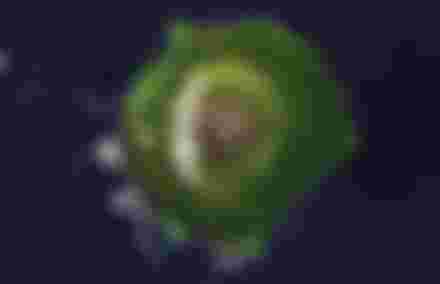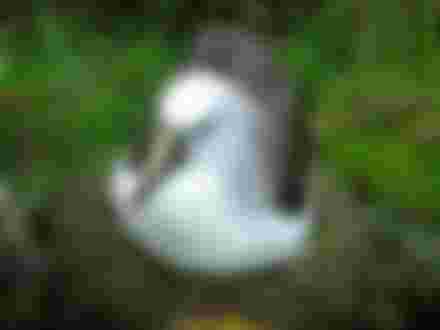An island with a distance of 2,000 kilometers from the nearest island. The only way to get there is by fishing boat or cruise ship. Can you live on that island? Surprising but true, such an island has been inhabited by some British citizens and their descendants since the 19th century. The island is called Tristan da Cunha.
Edinburgh's Seven Seas is the only village in Tristan under the British Overseas Territory of St. Helena. The island is small in the middle of the South Atlantic Ocean and has a population of only 245. In fact the island is set to become a volcano. Since its last eruption in 1971, it is still alive.

The distance from here to the nearest island is about 2171 km. The nearest country is South Africa with a distance of about 2432 km from its capital Cape Town.
Although the island is now in British hands, it was first discovered by a Portuguese named Tristao da Cunha. In 1508. He didn't think of anything more than a volcanic island. It was annexed by Britain in 1818. Initially used for military purposes, the island was later inhabited by civilians.
The 'Island Council' is currently doing administrative work on the island. Naturally the question arises as to how the people here make a living. They are mainly involved in agriculture. Being an island formed from volcanoes, its soil is suitable for cultivation and fertile. Potatoes are the main agricultural product. Besides strawberries, peaches and other things are also grown by the residents here. They are also involved in animal husbandry, farms, etc., from which the residents get the necessary milk and eggs. And naturally being an island, its fishery resources are quite rich. Tristan de Cunha’s famous ‘Rock Lobster’ is exported to Japan and the United States.

Only 9 families live in the whole island. The family owns the entire island, and no outsider has the right to acquire or purchase the land. The island has a church, a school, a hospital, a supershop, a post office, a community hall, a cafe and a museum. Almost all civic amenities exist here.
St. Mary's School teaches children between the ages of three and sixteen. Most of the students completed their primary education on the island. Students over the age of 18 can travel to the UK or South Africa with the help of the Trust Fund for Higher Education. Although the internet facility is not very good, the internet facility is taken at 'Prince Philip Hall' through VISAT. The fun part of the museum is that anyone can spend the night here by booking.
Due to the volcanic eruption in 1971, the islanders had to live in England for two years. When the situation is normal, the residents come back again. Now tourists can go hiking in the volcanic mountains if they want. A park was built there in 2013 to commemorate 1971. It has been named Vulcano Park 71.
The island is also rich in biodiversity. In addition to penguins, albatrosses, seals, and whales, a variety of creatures are found. Which is enough to attract tourists.

The entire island is served by a single bus. Anyone can tour the entire island by bus or on foot. Sometimes there are benches on the side of the road for rest. Tourists flock to Tristan de Cunha from far and wide, surrounded by rolling Atlantic and a noise-free environment.
However, just as it is difficult to get to the island, it is also difficult to get permission to enter. First you have to apply keeping in mind the schedule of the ship. In some cases, it may take up to a year. Then it is necessary to ensure the place to spend the night. Tourists can stay in any of the local residents' homes, guest houses or museums. However, you have to arrange your own food in the guest house.
Then the permit. Prior to departure, an email has to be sent to the Administrative Secretary stating the name, age, nationality, date and purpose of the trip etc. of the traveler. If necessary, the local administration may also ask for the traveler's criminal record.
There are various arrangements to give you a taste of adventure if you just gasp at the sight of the natural beauty. These include hiking, golf, boat trips, etc. In addition, Queen Mary's Peak has a heart-shaped 'Love Lake' which is located at an altitude of 2062 meters.

Tristan de Cunha is one of the few regions that has survived the current Covid-19 epidemic. At this time of social distance, they are 2171 km away from the nearest neighbor. Moreover, they have stopped all types of shipping since March 2020. Hopefully they will be able to save themselves from this disaster.
The islanders have their own website to keep abreast of all the information, births, deaths, announcements and updates of the indigenous people. If you visit the website, it will seem that the whole island is a big family with all the members having news.




Beautiful article